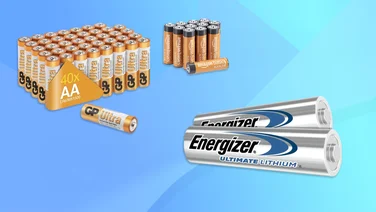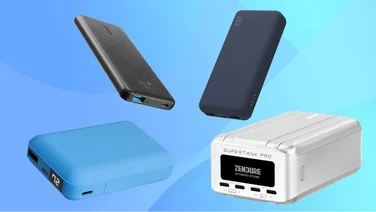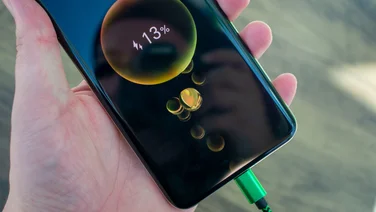To help us provide you with free impartial advice, we may earn a commission if you buy through links on our site. Learn more




News update: AirPower is no more. Apple’s wireless charging mat was rumoured to be launching in the first half of 2019, but consistent delays and technical difficulties have culminated in an official statement that marks the end of the road for the beleaguered technology.
“After much effort,” said Dan Riccio, Apple’s senior VP of Hardware Engineering, “we’ve concluded AirPower will not achieve our high standards and we have cancelled the project.” Riccio continued his statement by apologising to anyone who was looking forward to the launch and also reassured customers that Apple was still committed to “the wireless experience.”
The AirPower mat was originally announced in 2017 alongside the iPhone 8 and iPhone X: since then, reports suggest that Apple has struggled with compatibility issues caused by the design of the Apple Watch series 3. Bizarrely, the recently launched AirPods 2 referenced the AirPower technology on their packaging, which suggests that the decision to cancel the project was made very recently.
The original article continues below.
Apple’s much-maligned wireless charging mat, known to you and me as AirPower, will start shipping in the first half of 2019 according to Korean industry analyst Ming-Chi Kuo. Naturally, this does not come as a surprise – after all, we’ve known about AirPower for years now.
The latest development stems from a report produced by Kuo (via MacRumors) on Sunday 17 February, which outlines the American tech giant’s release schedule for 2019. Alongside a new iPad mini and MacBook Pro (among other things), Apple looks set to finally roll out AirPower this year. No other details have been given about the product but, given Kuo’s international renown for correctly predicting such releases, we’re almost certain we’ll see the wireless charging mat this year.
Corroborating this theory is a report from Applesfera that claims we’ll see AirPods 2 before March is out. It would make sense if AirPower was rolled out alongside Apple’s update earbuds, given that the latter features a Qi wireless charging case. AirPods 2 are said to feature an astonishingly quick 0-100 charging time of just 15 minutes, though. Could this be a result of Apple’s as-yet-unreleased AirPower technology? We certainly hope so.
Whilst we wait with bated breath, here’s everything else we know about Apple’s upcoming AirPower.
READ NEXT: Everything you need to know about the upcoming iPad mini 5




Apple AirPower: What’s the holdup?
As mentioned, we’ve known about AirPower for over a year now, so why the delay? As ever with the secretive tech giant, it’s impossible to know for sure. According to AppleToolBox, the biggest issues in manufacturing AirPower have revolved around the Apple Watch. The Apple Watch has always support Qi charging, but the convex design of the Apple Watch Series 3 made it incompatible with third-party chargers, most of which are flat.
The rumours also suggest that there was internal conflict regarding a compulsory $69 case to support wireless charging for AirPods. With AirPower likely to start at $99, this was seen as an unnecessary tax on those simply wishing to use the device they had already paid a small fortune for.
Is this why it was a no-show at Apple’s September 2018 event? Possibly. Hopefully, though, Apple has almost solved these problems, and we won’t have to wait until the September 2019 event for a progress update.
READ NEXT: Apple Watch Series 3 review
Wireless charging: What is it?
As you’ve probably guessed, wireless chargers allow you to power up your devices without connecting them directly to a power source. Just place them on a mat, and as if by magic the little charging light will come on, and your device will begin to get its juice back. Despite the name, however, you still need a wire to connect your charging mat to a socket, so it’s not completely cable-free just yet.
The benefit of this? Well, there are many. First, anyone who has ever struggled with frayed cable ends, or indeed a busted charger, can kiss goodbye to those problems. Also if your handset’s water or dust resistance comes in the form of port covers, you need no longer be slowed down by constantly opening and closing them.
The most common wireless charging standard, Qi, is also available in a number of public places, and coverage is sure to expand over time. This means if you’re in a hotel or airport you can easily and quickly top up your battery on the go.
Since wireless chargers adhere to a near-universal standard, there is also the possibility of charging multiple devices using only one pad. One of the key selling points of Apple’s upcoming AirPower will be the ability of the consumer to charge all of their Apple devices using just one AirPower pad, rather than having separate chargers for them all.
So, despite wireless charging not being quite as cost – or energy – efficient as the old school method at this moment in time, there are plenty of benefits. But how exactly does it work?
Wireless charging: How does it work?
In the simplest of terms, wireless charging uses electromagnetic fields to transfer power from a transmitting source to a receiving device, based on the principle of magnetic resonance.
Voltage from the mains is converted into a high-frequency alternating current, which is then sent to a transmitter coil (via a transmitter circuit) to create a magnetic field within the coil. The latter is what you will find inside the charging plate or dock.

When a device is placed on the pad, the magnetic field spreads to the ‘receiver coil’ in the device. Here, the energy is converted into a direct current which flows into the battery and charges it, allowing you to browse funny pictures of cats on the internet, or hurl abuse at strangers on Twitter. Or both: knock yourself out.
What’s different about AirPower?
‘Qi’ (Chinese for ‘energy flow’) is the market-leading wireless charging standard set up by the Wireless Power Consortium in 2008. This is the technology you will find in the majority of devices with wireless charging capabilities, including all of Apple’s up to this point.
AirPower represents Apple’s own spin on this technology, in that you will be able to charge at least three separate devices at once. More than just a charging device, however, it will allow your devices to communicate and manage power consumption between them – a feature that isn’t possible with other wireless charging systems currently on the market.
AirPower will still rely upon wall sockets, and it will almost certainly feature a USB port to allow you to connect it to your computer. As previously mentioned, wireless pads have struggled with slow charging times up to this point, and it will be interesting to see whether Apple has developed a solution to this problem with AirPower.




AirPower release date: When will it be available?
AirPower was a no-show at Apple’s September 2018 keynote event. Exactly a year on from its announcement, it didn’t get a single mention and is still MIA.
That means a release date remains completely up in the air. In fact, it’s possible AirPower has been completely killed: it’s not mentioned in the Apple Watch Series 4 compatibility section, which could sound alarm bells given it was listed for the Series 3…
READ NEXT: iPhone 11 release date and rumours
AirPower price: How much will it cost?
If it is still alive, it’s likely to be pricey.
While regular wireless charging pads will set you back around £40, AirPower is likely to be closer to £100. Apple’s original Apple Watch Qi charger costs £60, but the ability to charge multiple devices on AirPower will likely increase the price significantly.
According to Chongdiantou, the price will be $149 (around £114), and one previous rumour claimed it could be as high as $200 (£153).
As with all Apple products, the only thing we can be sure of is that AirPower will impact your bank account significantly.
Make sure you stay tuned to this page for all the news and updates regarding Apple’s upcoming AirPower.







